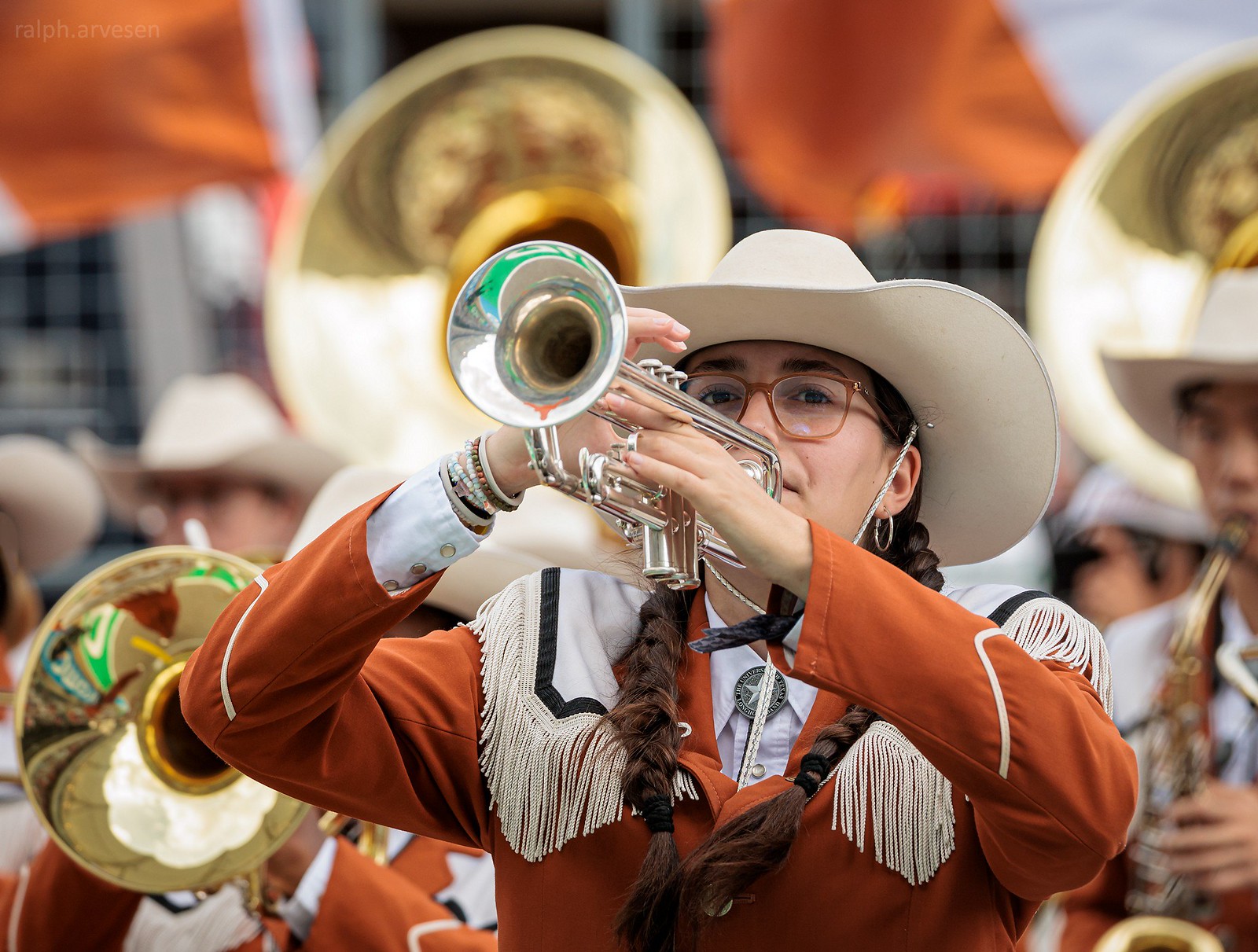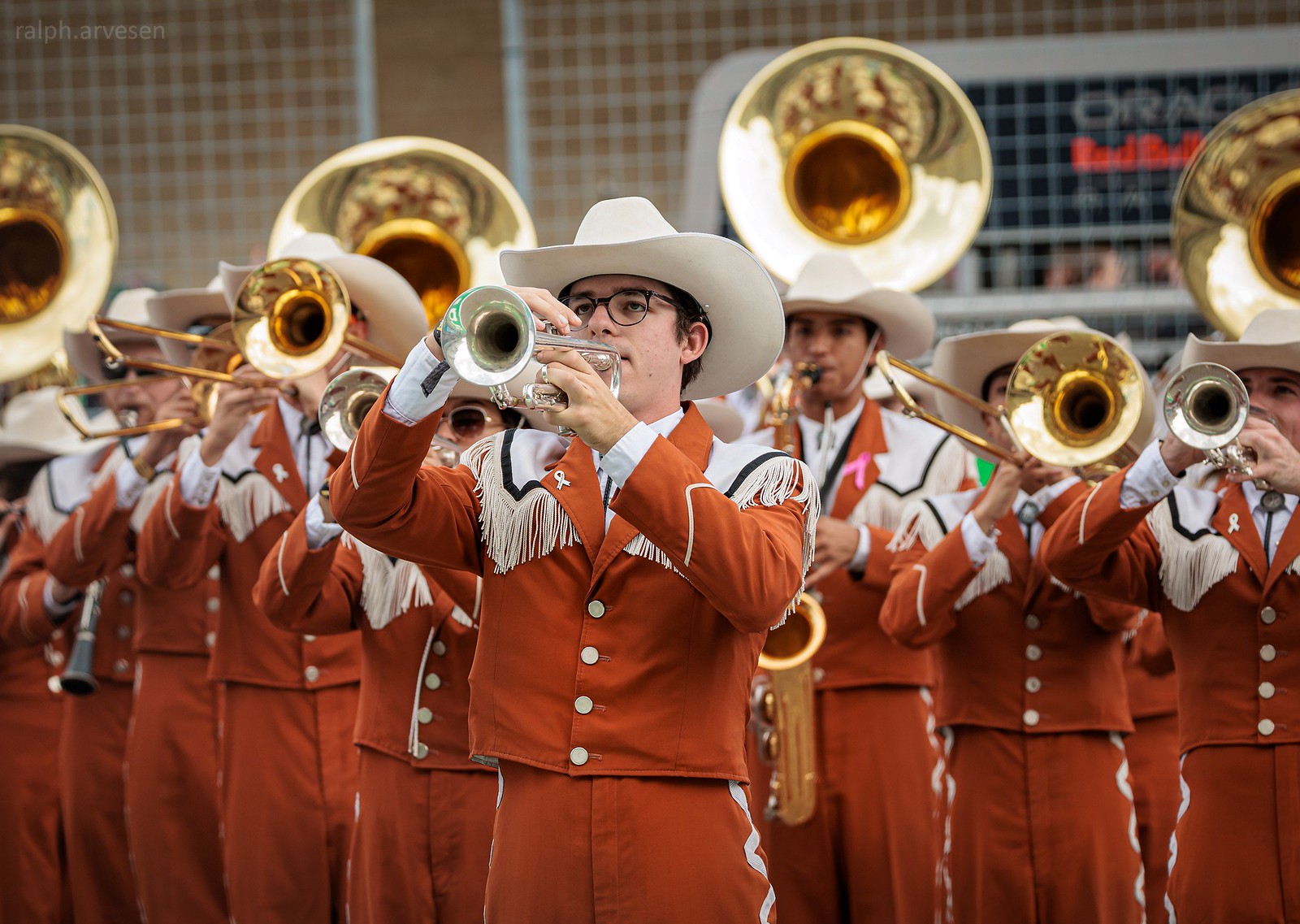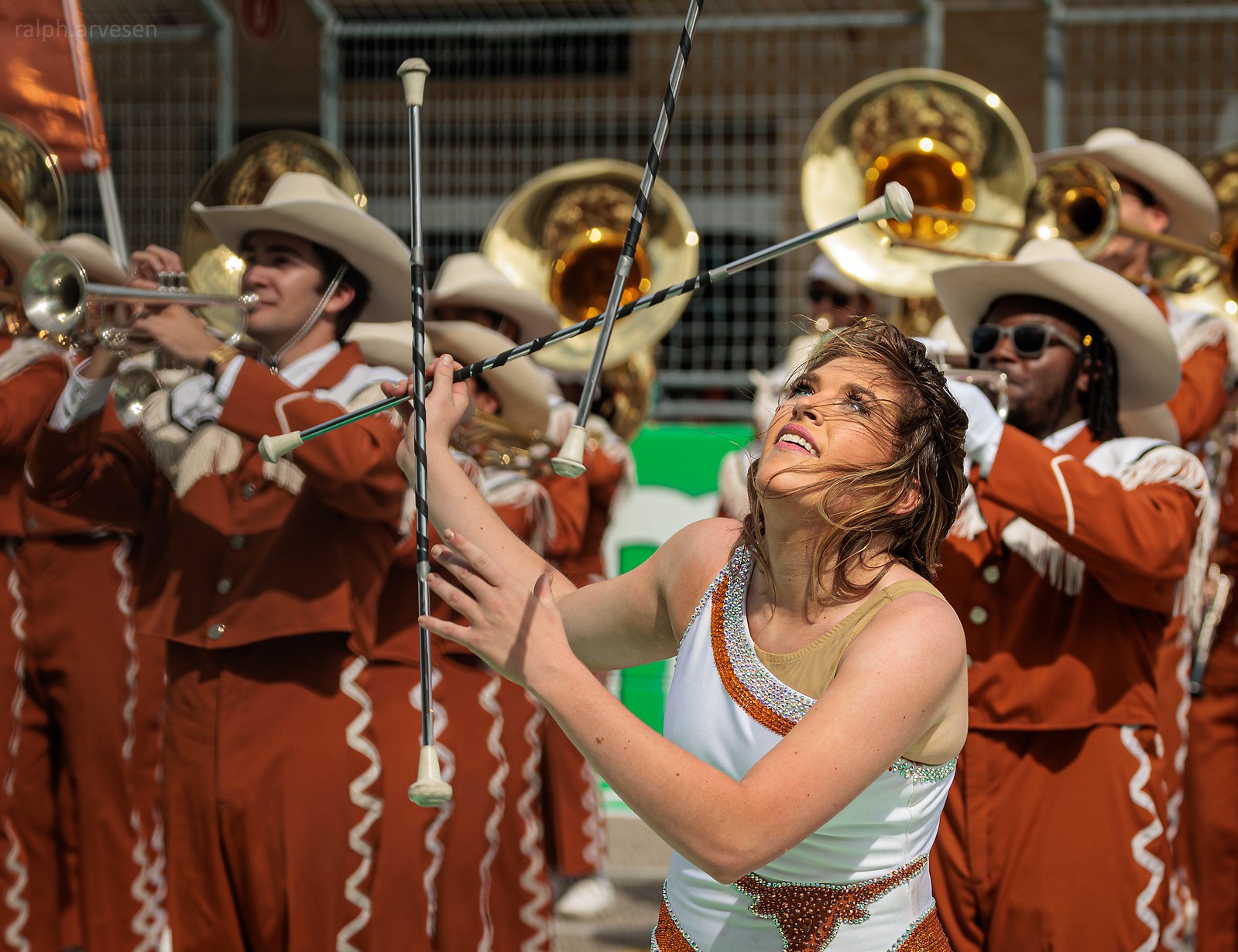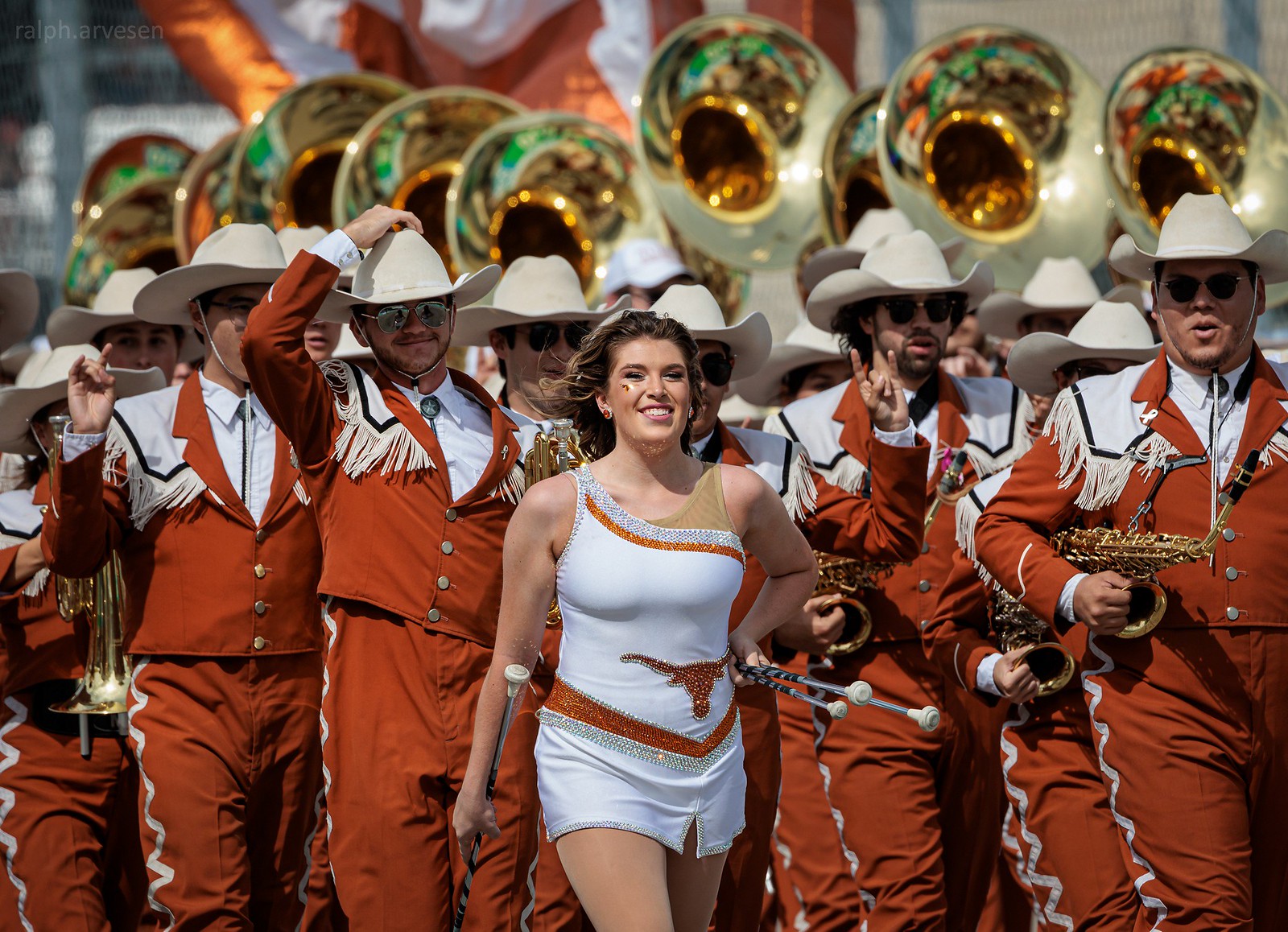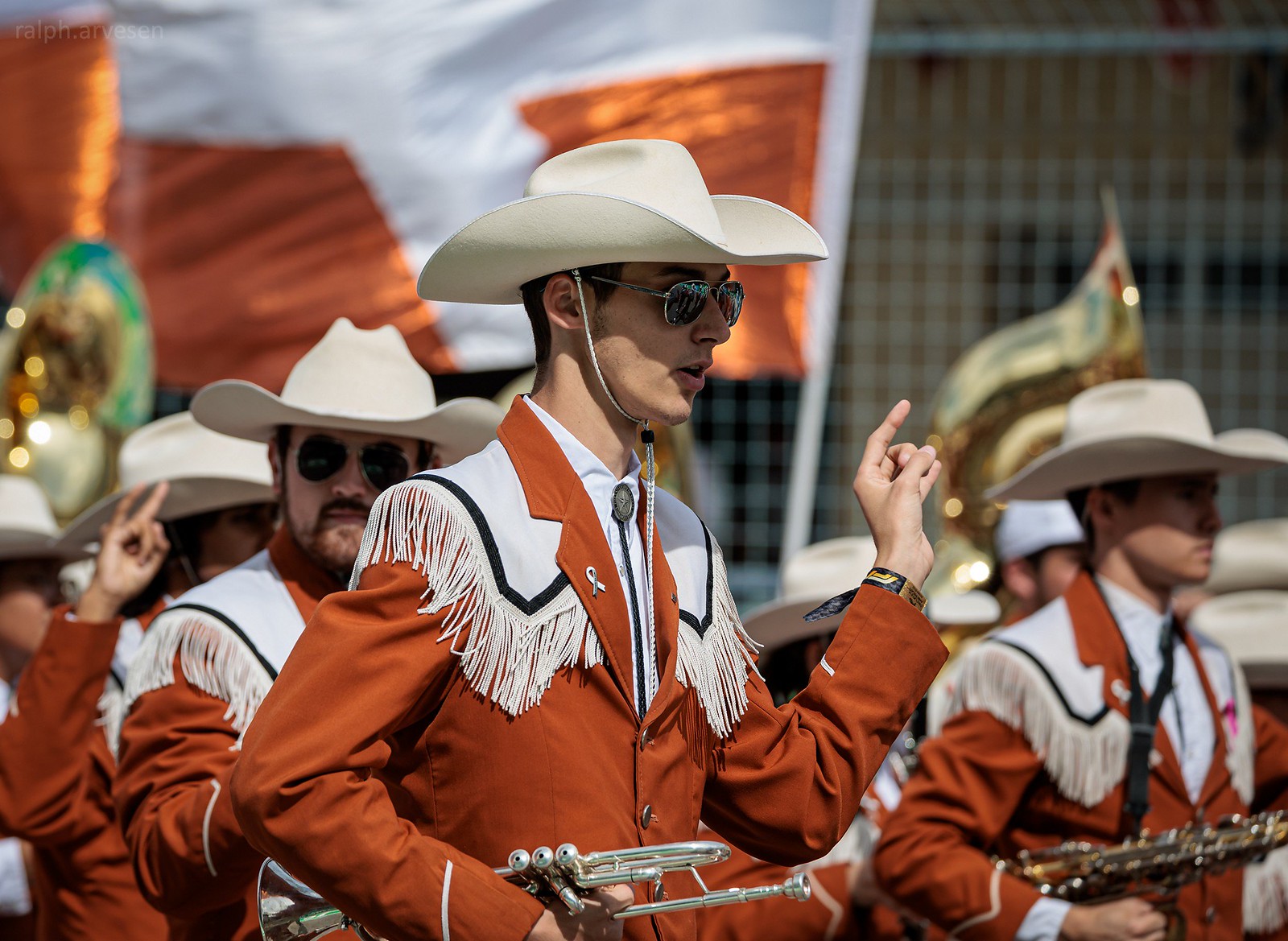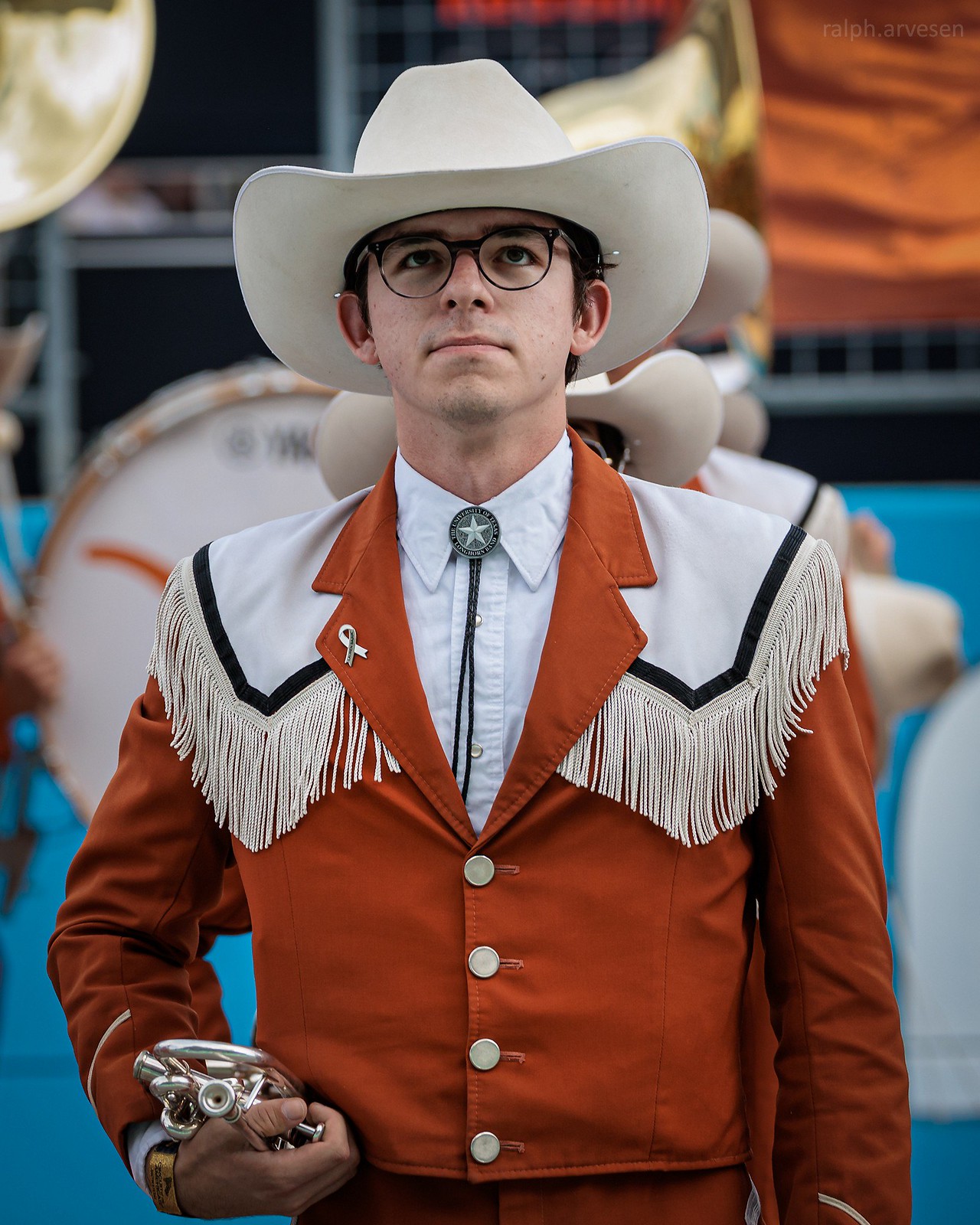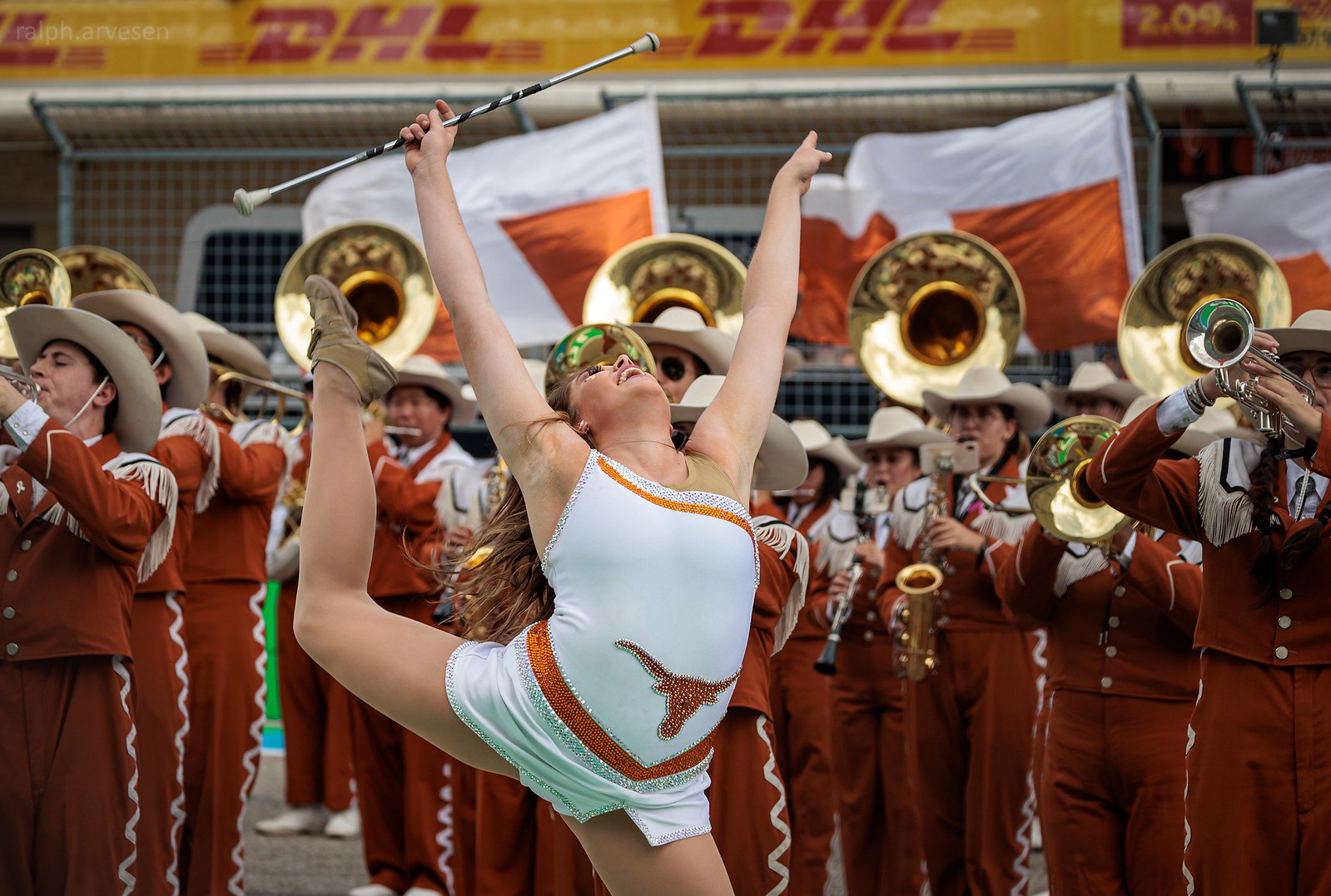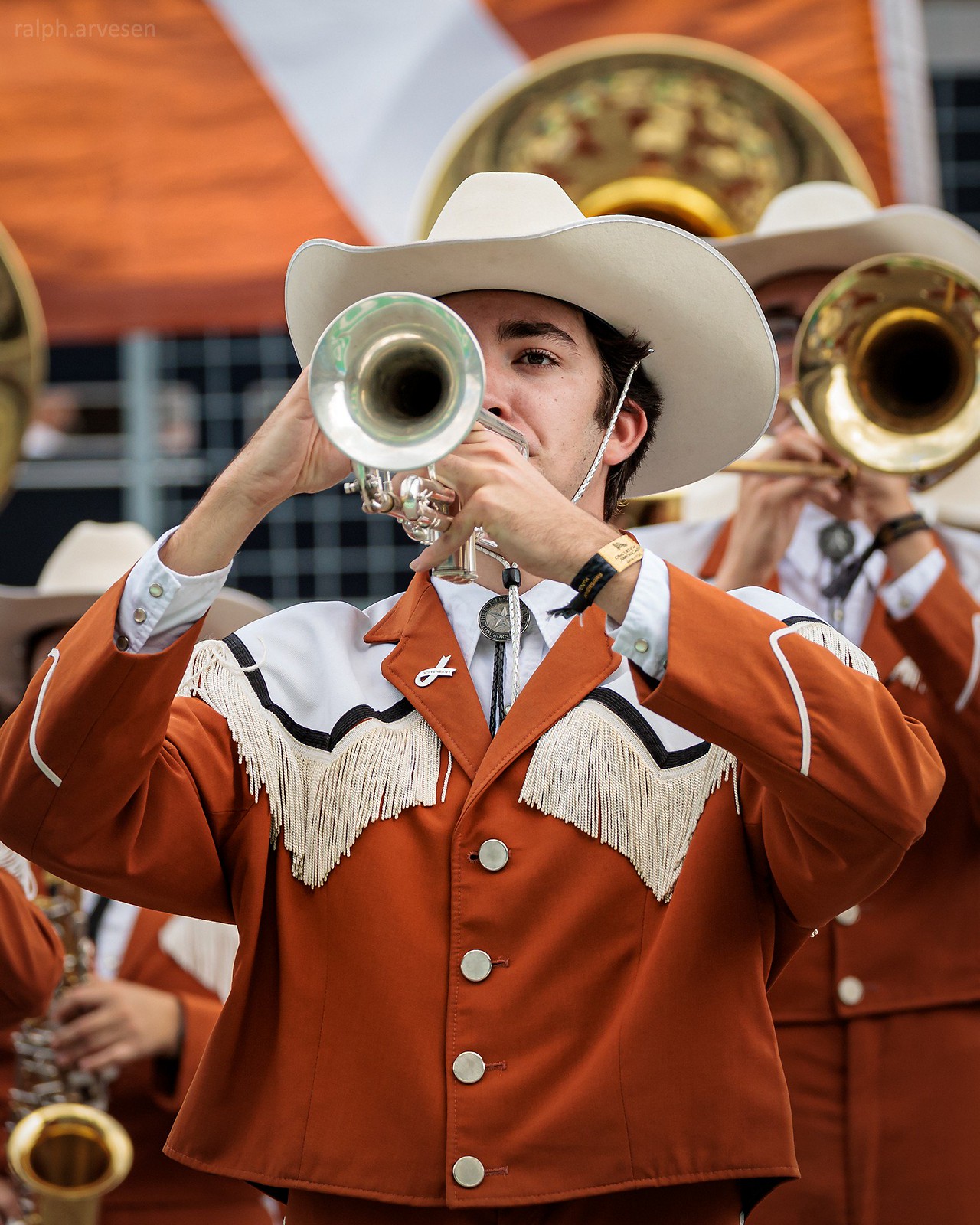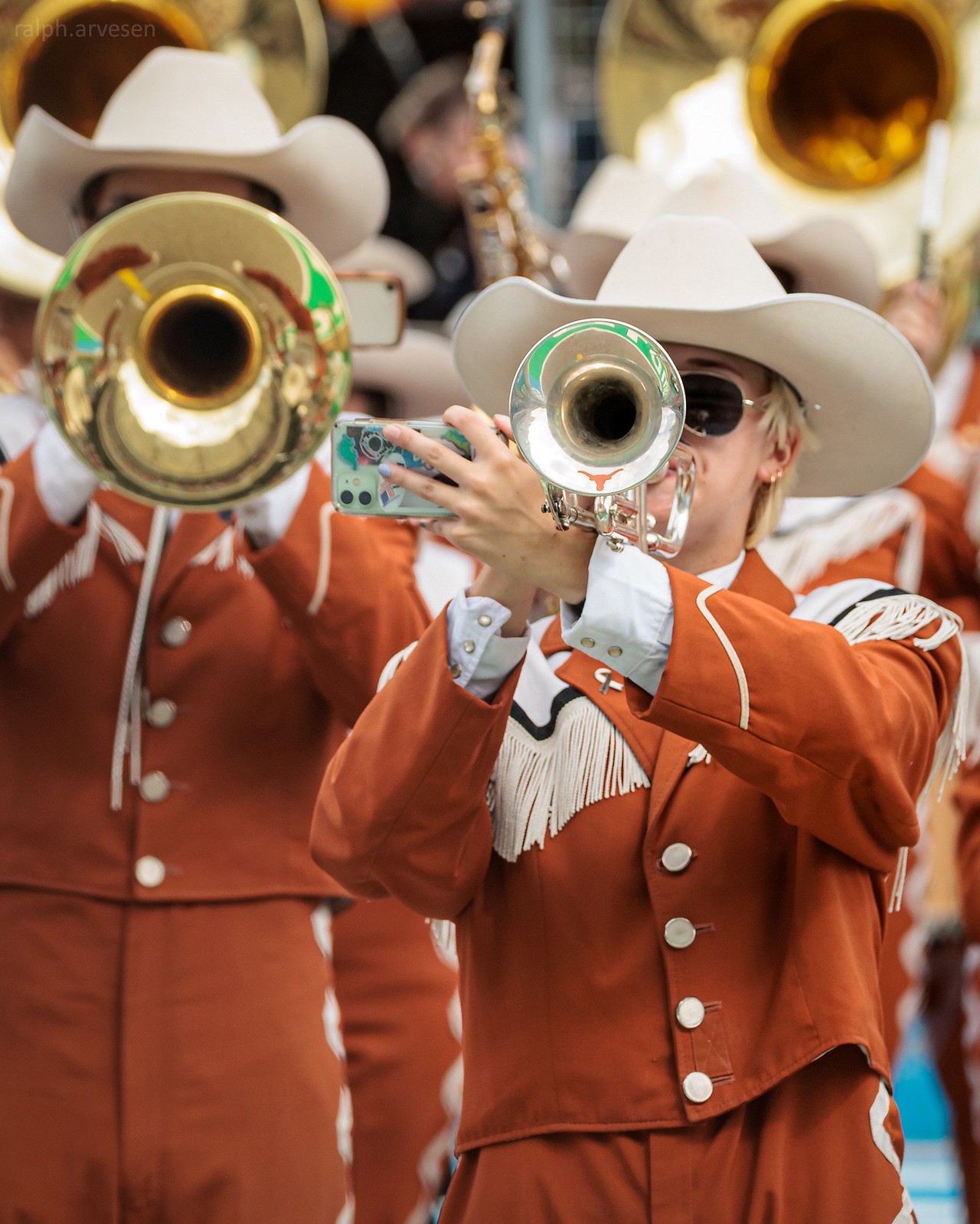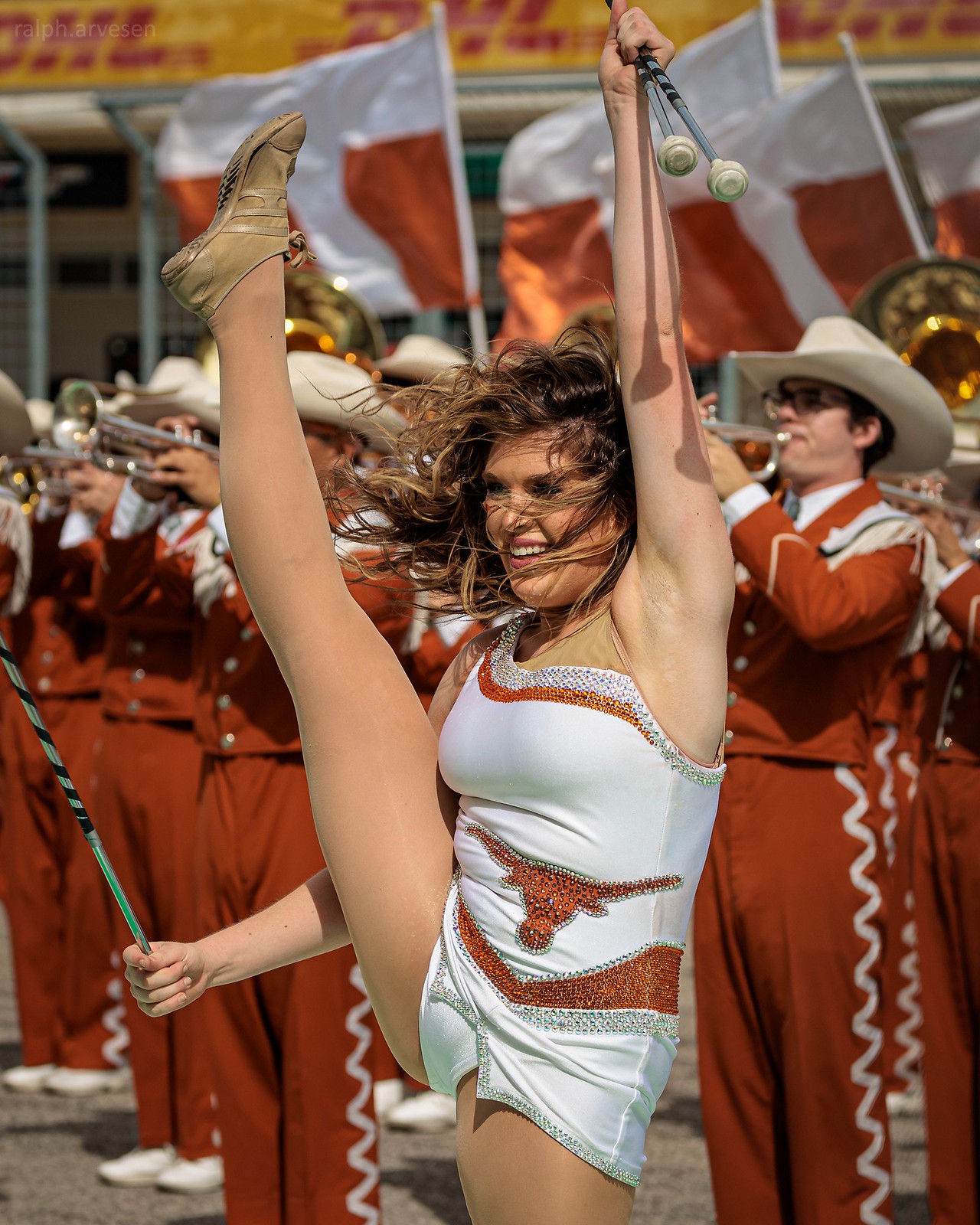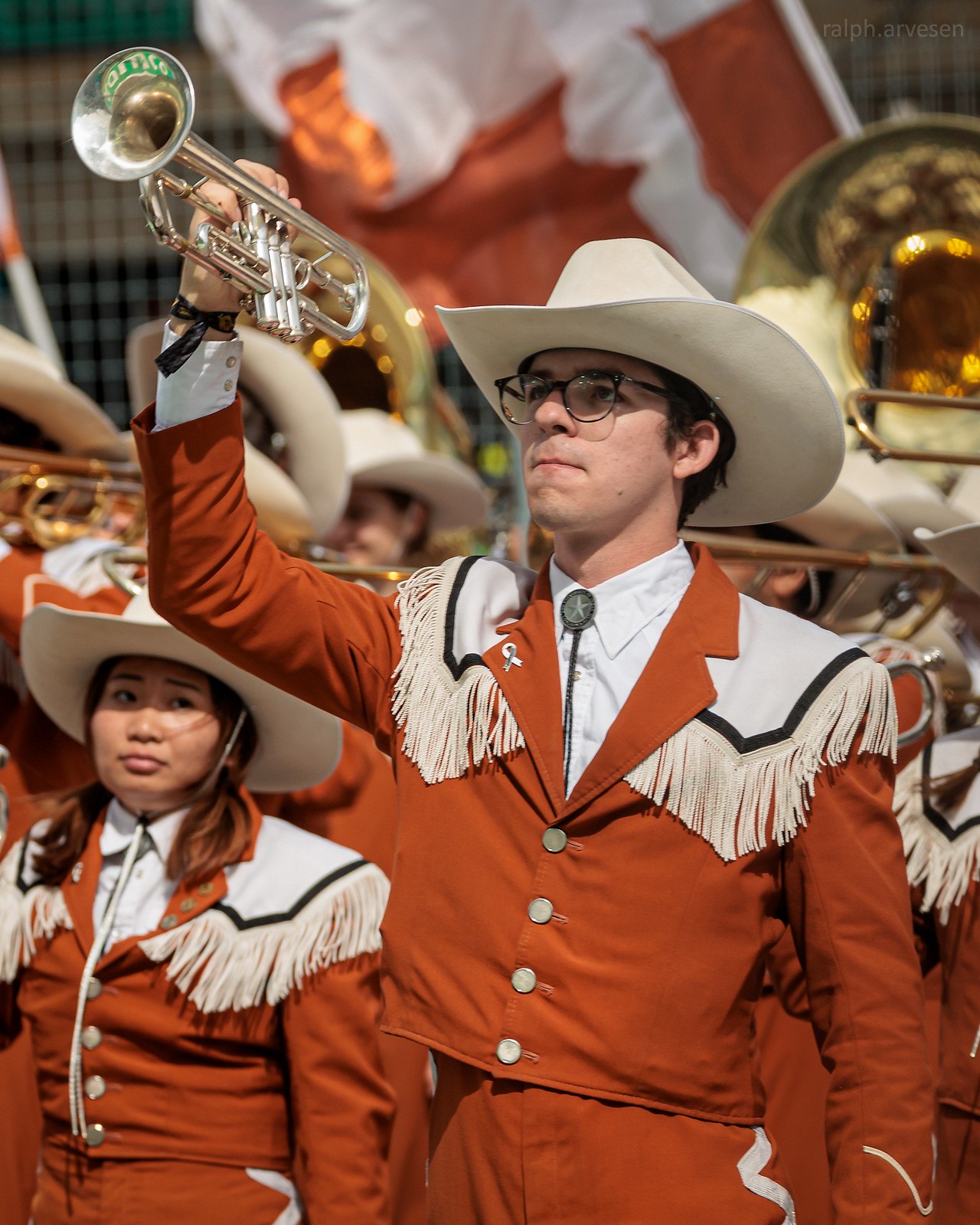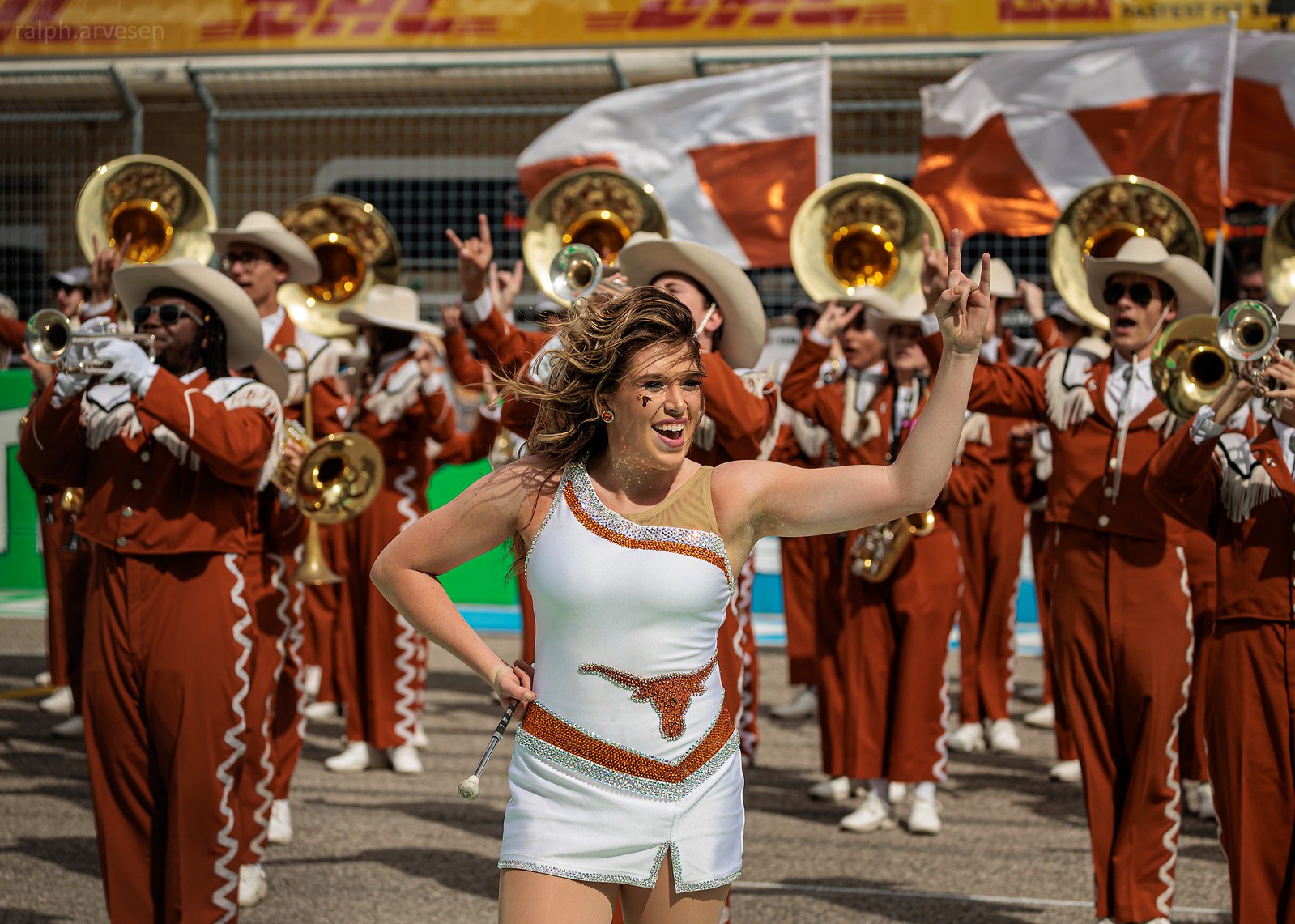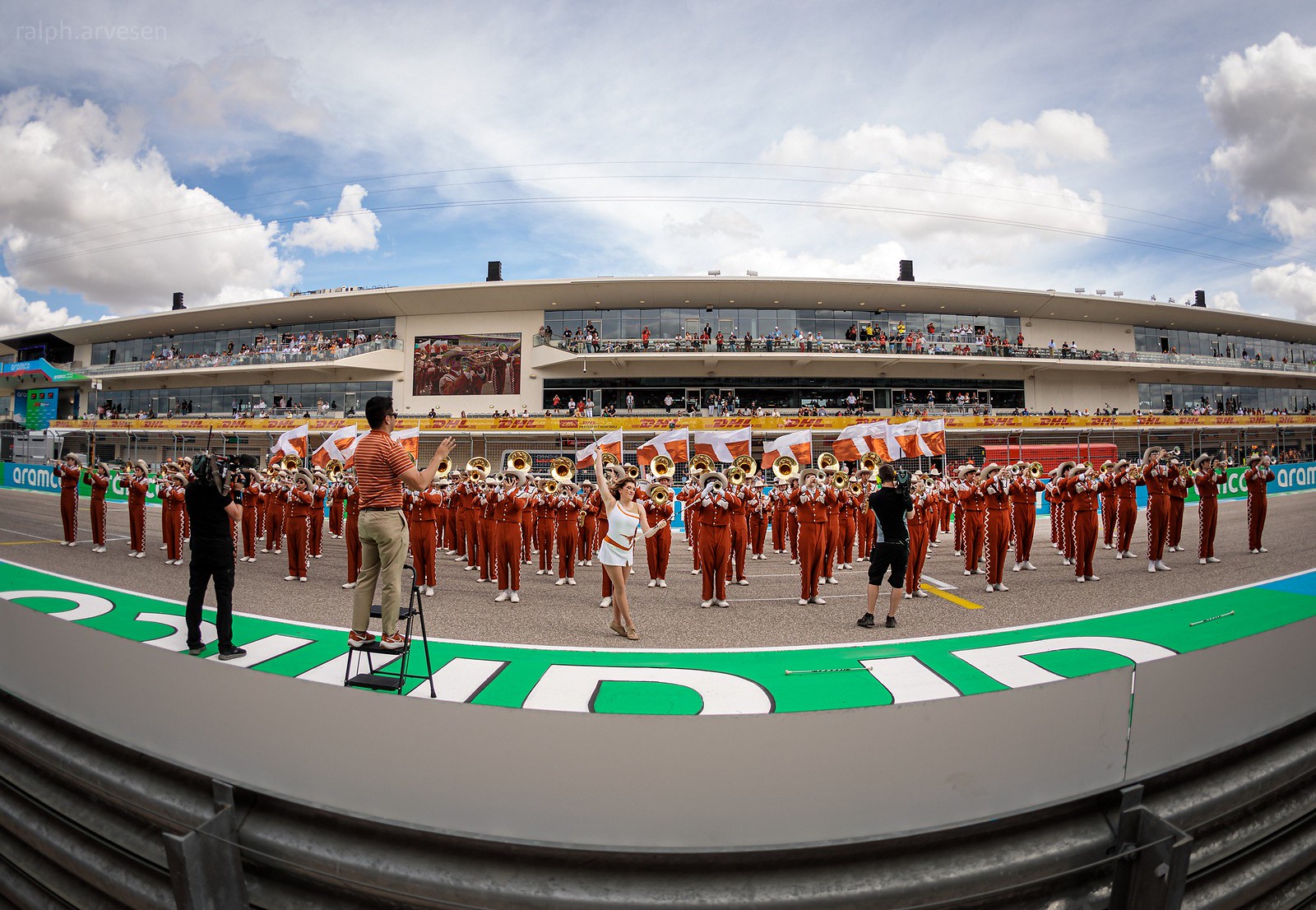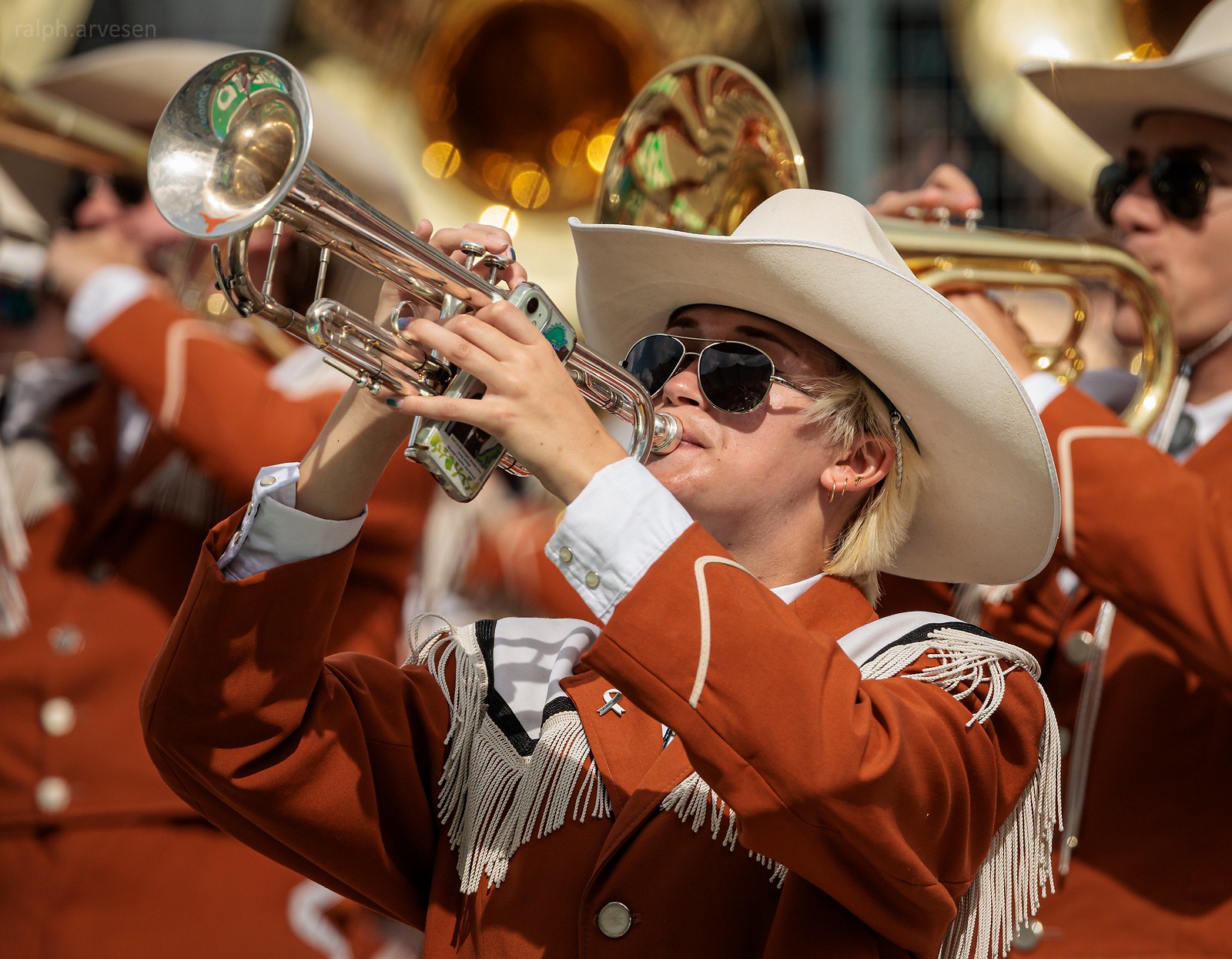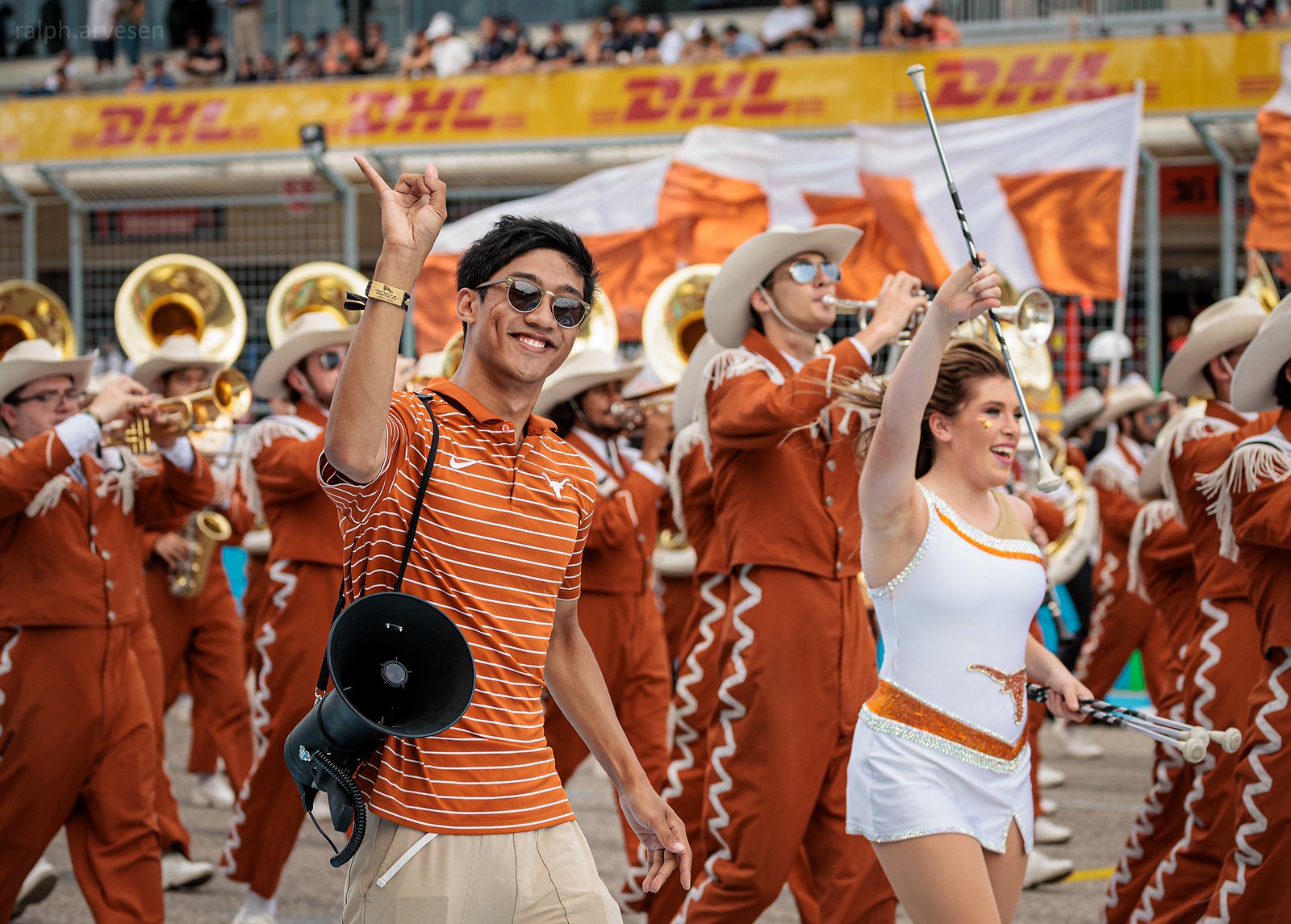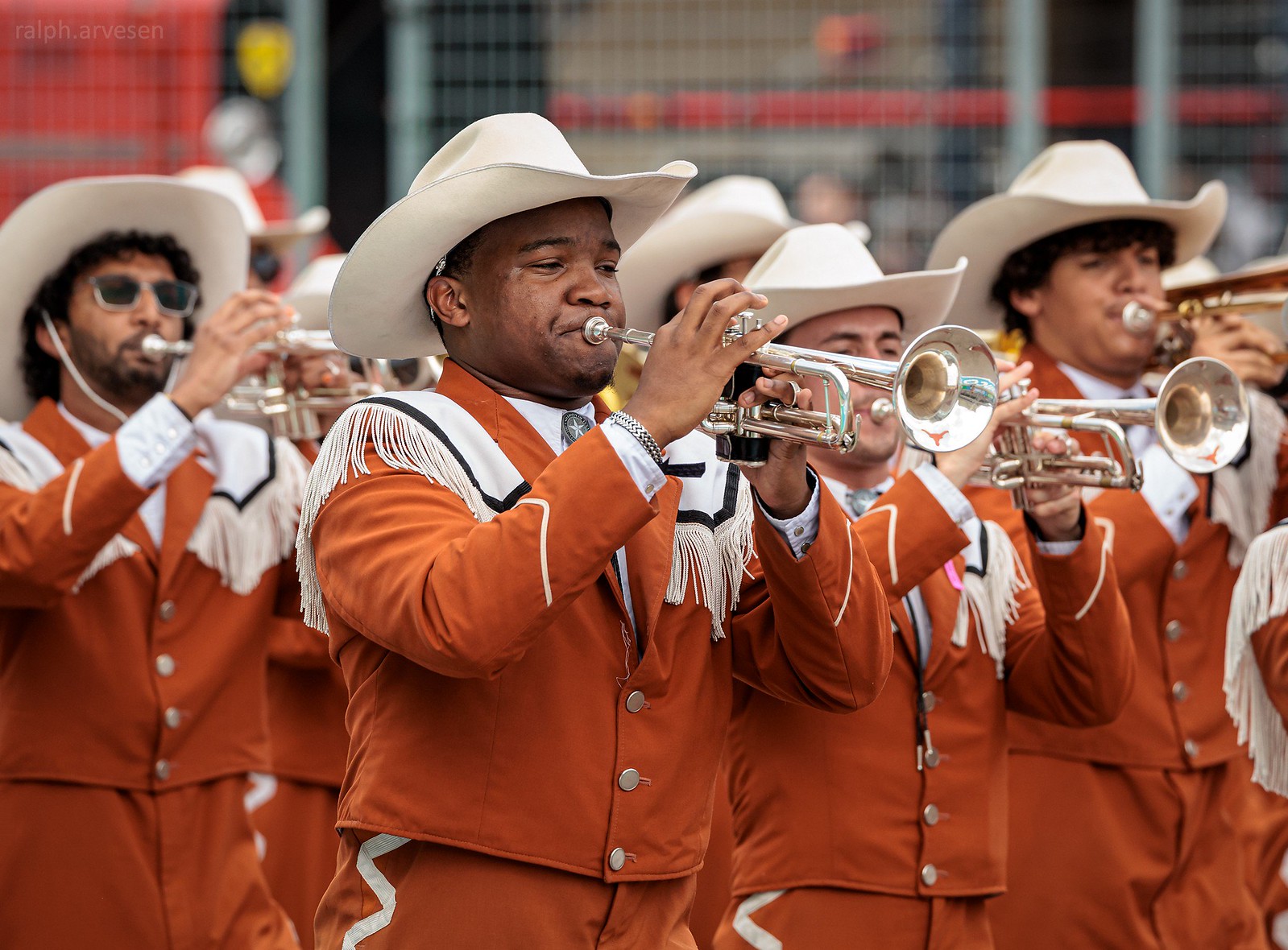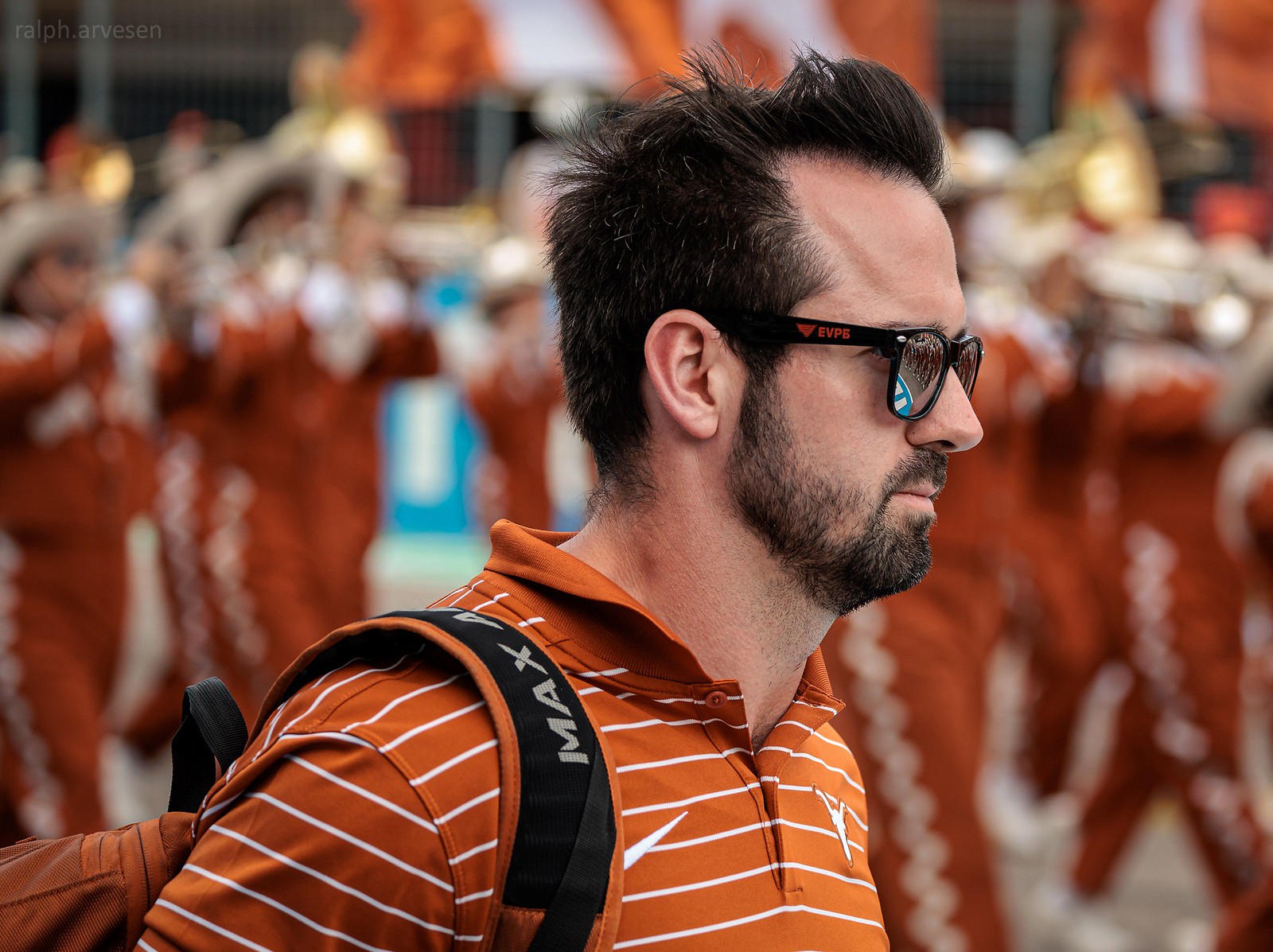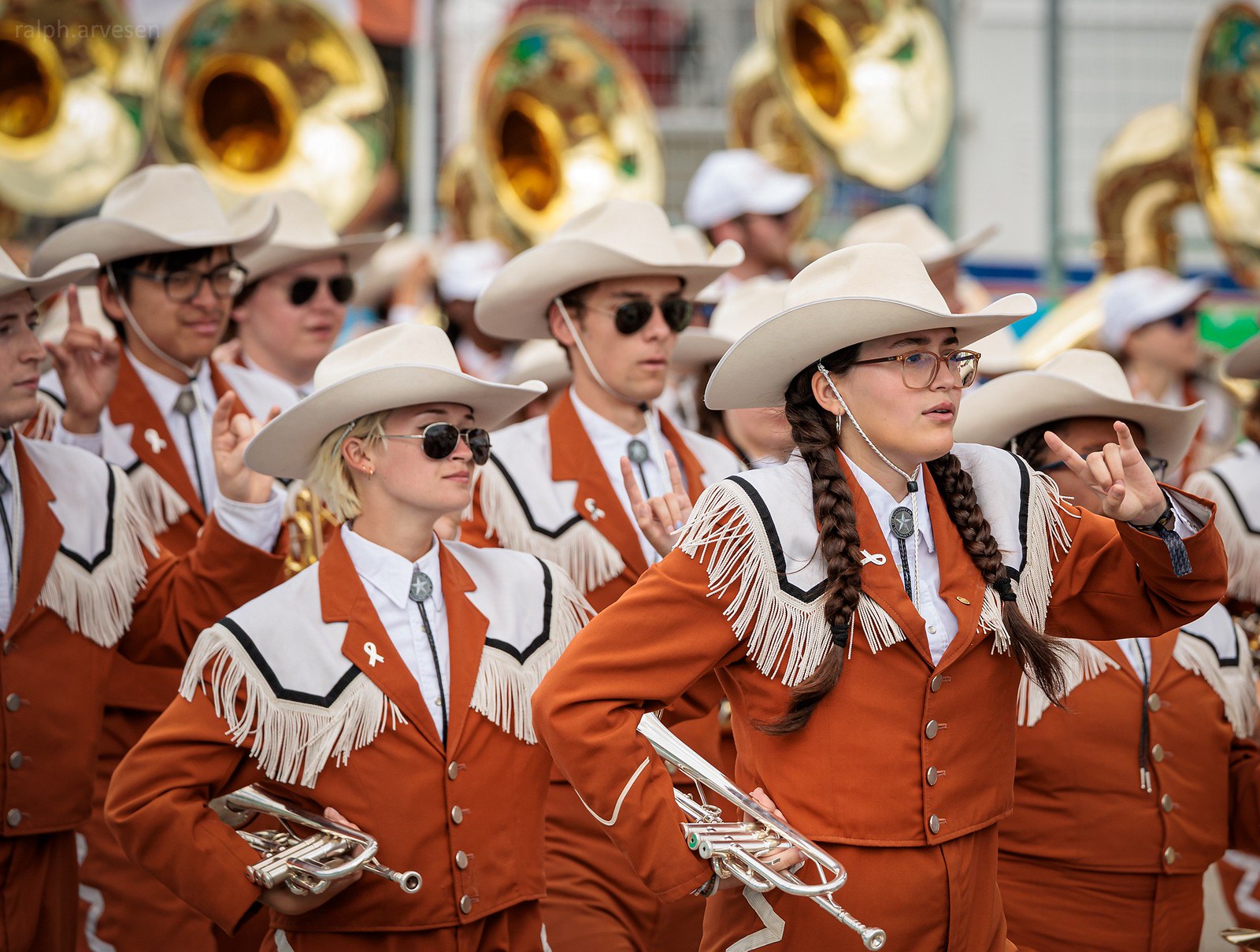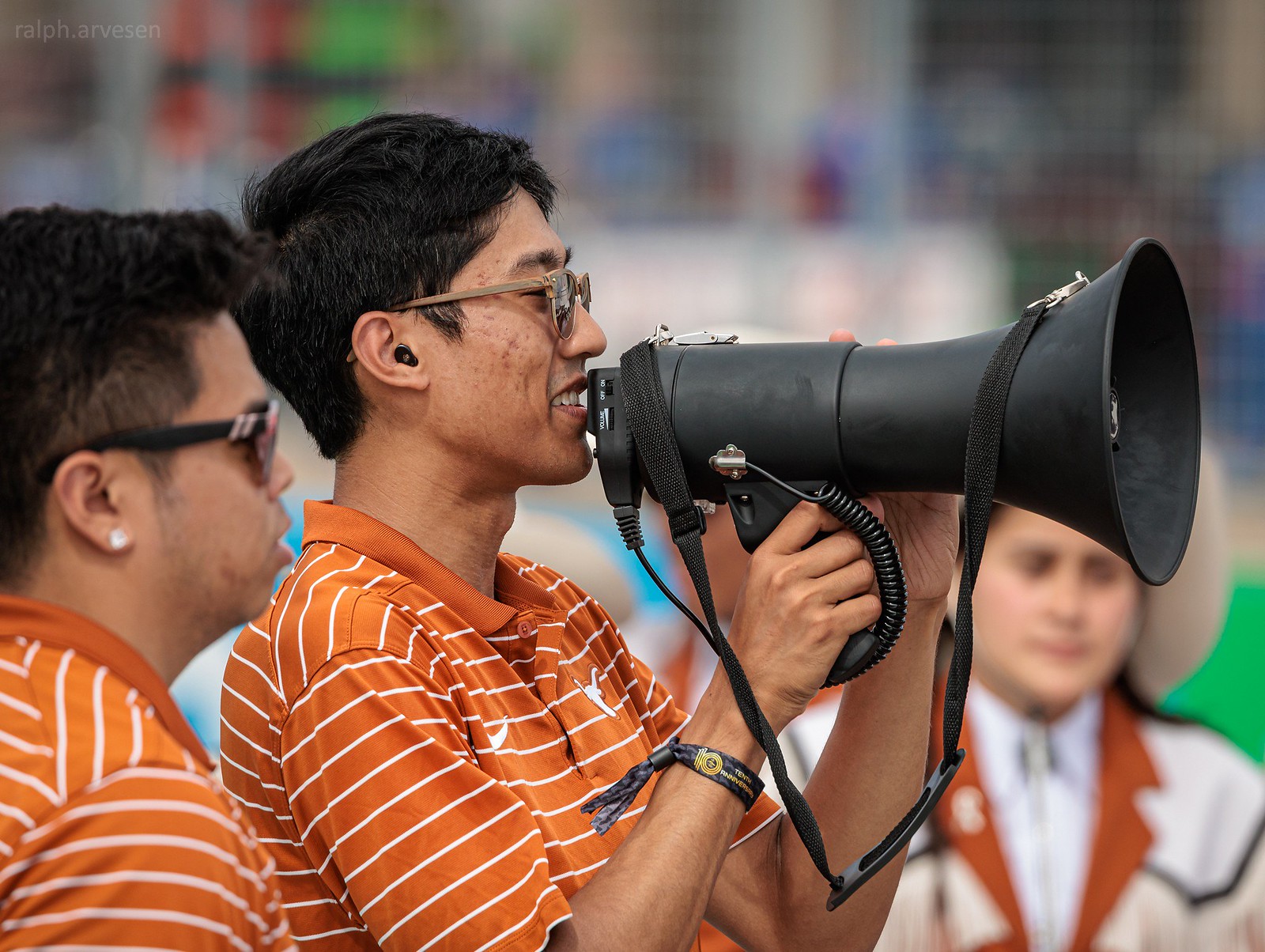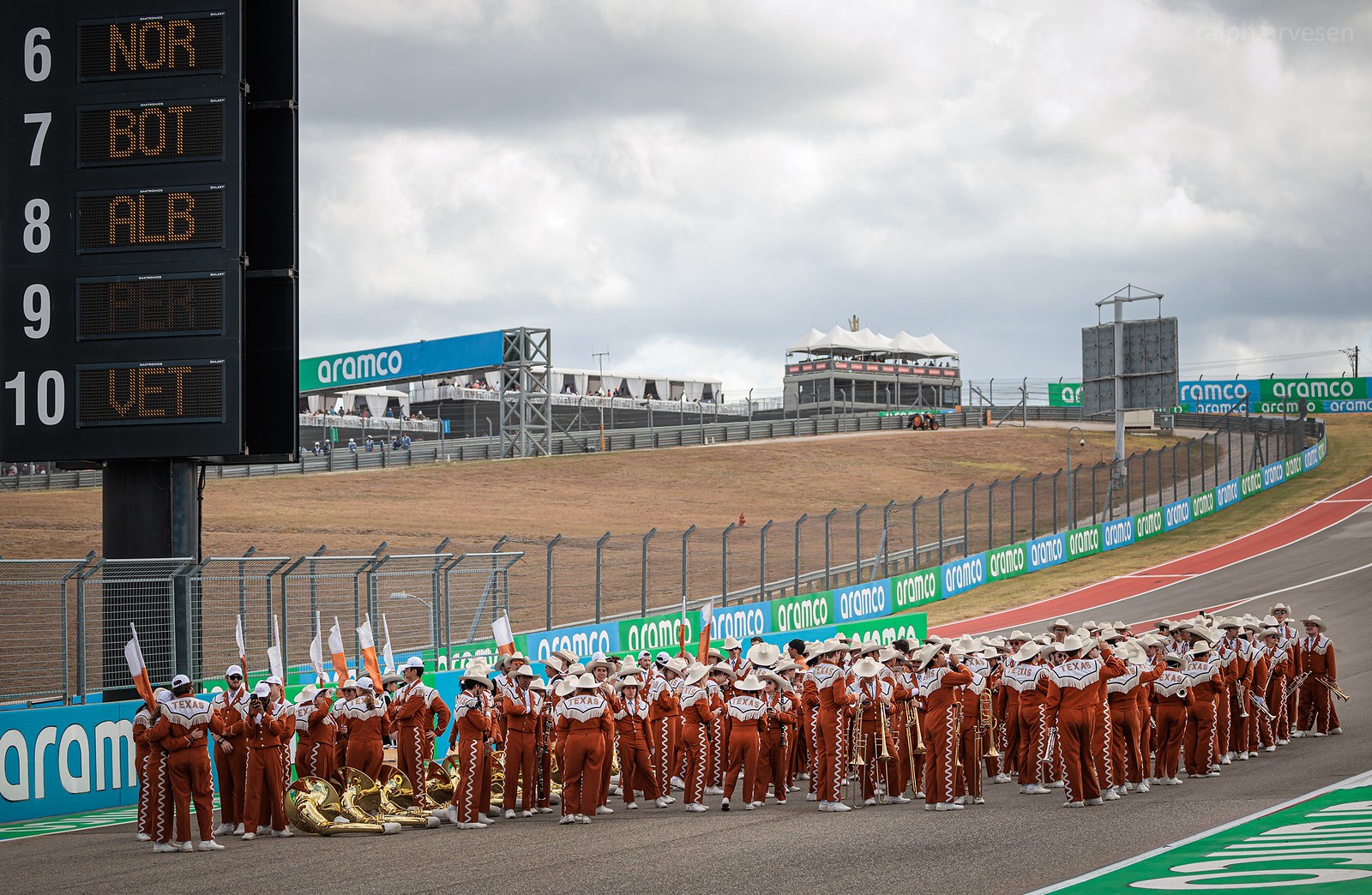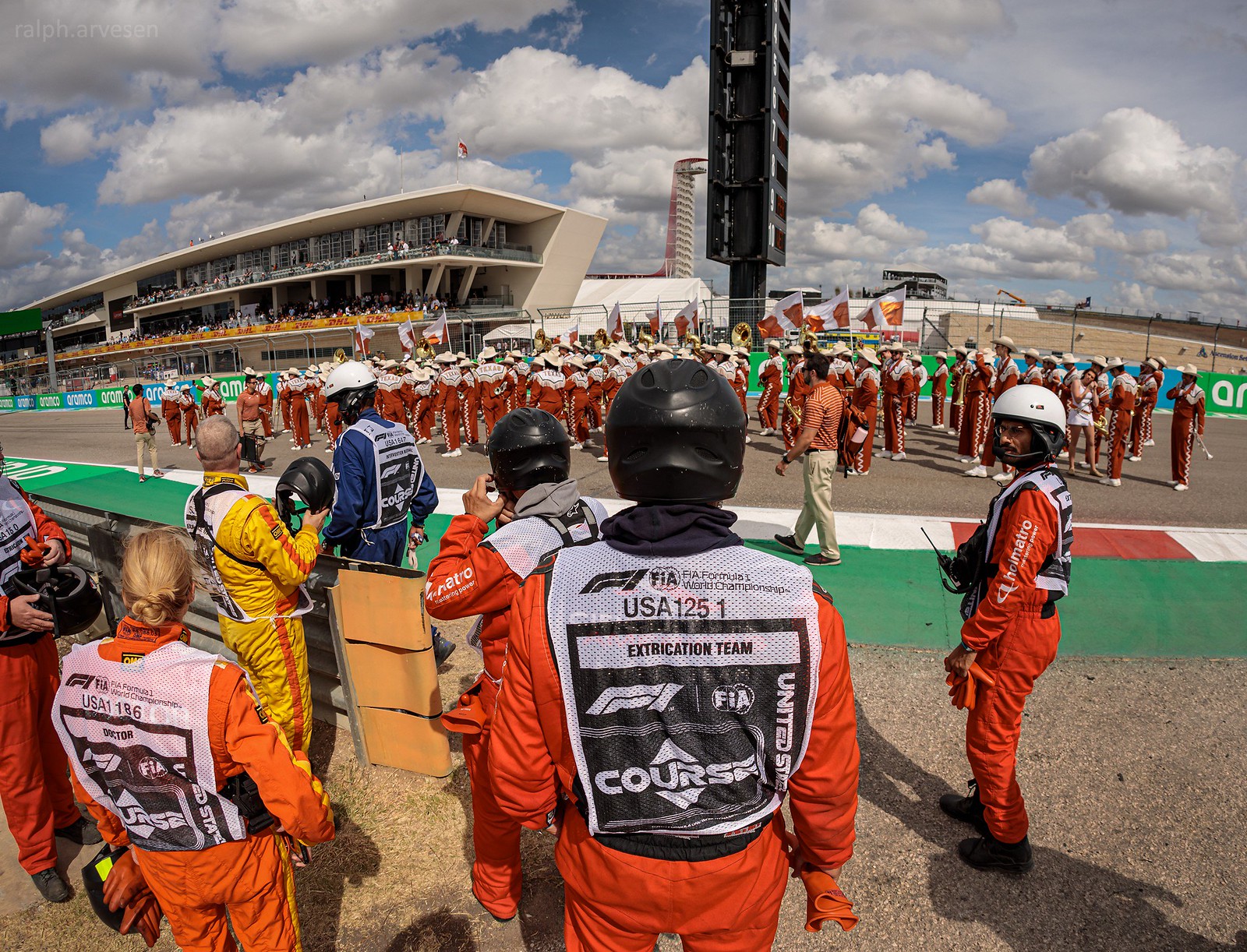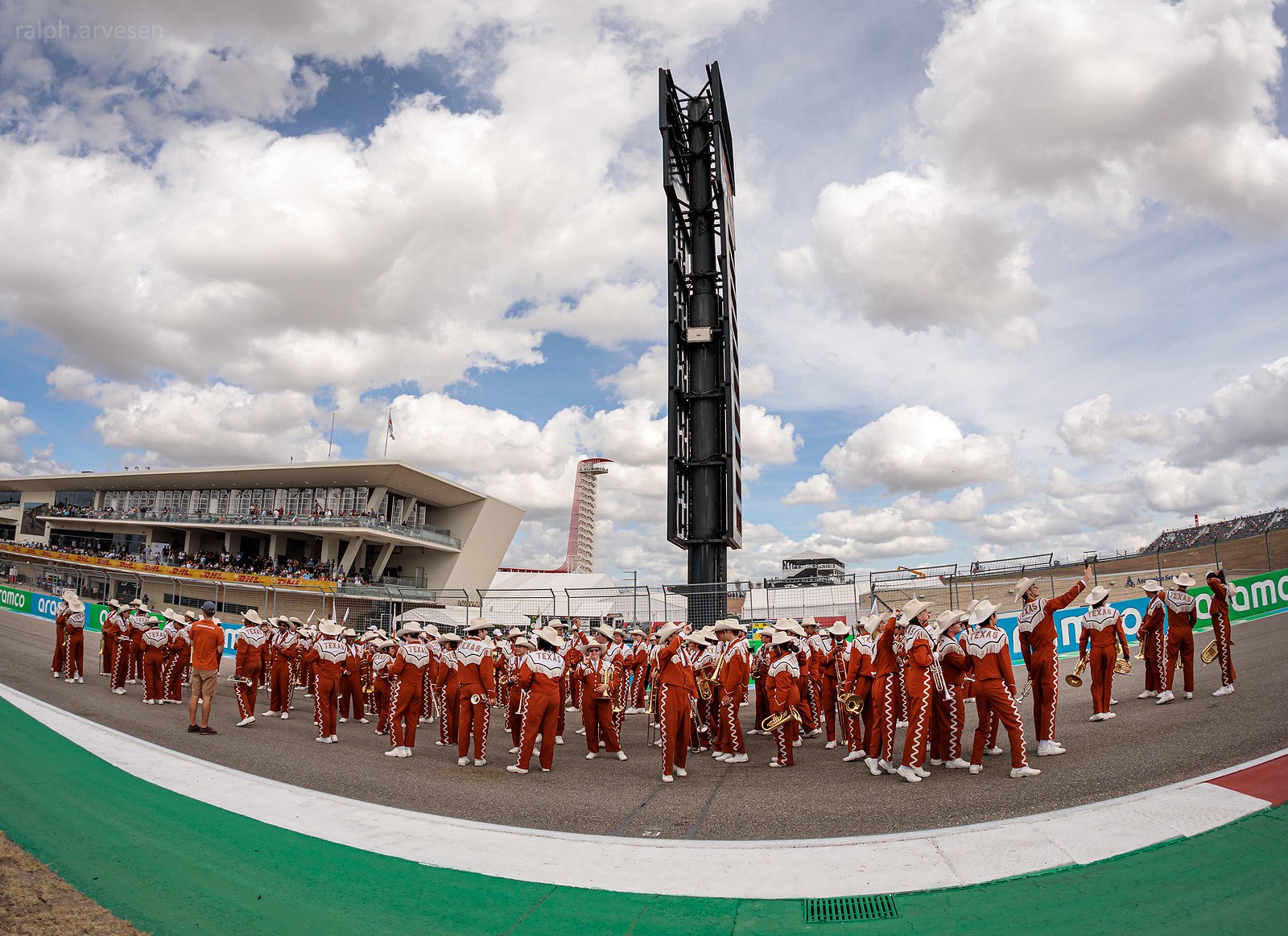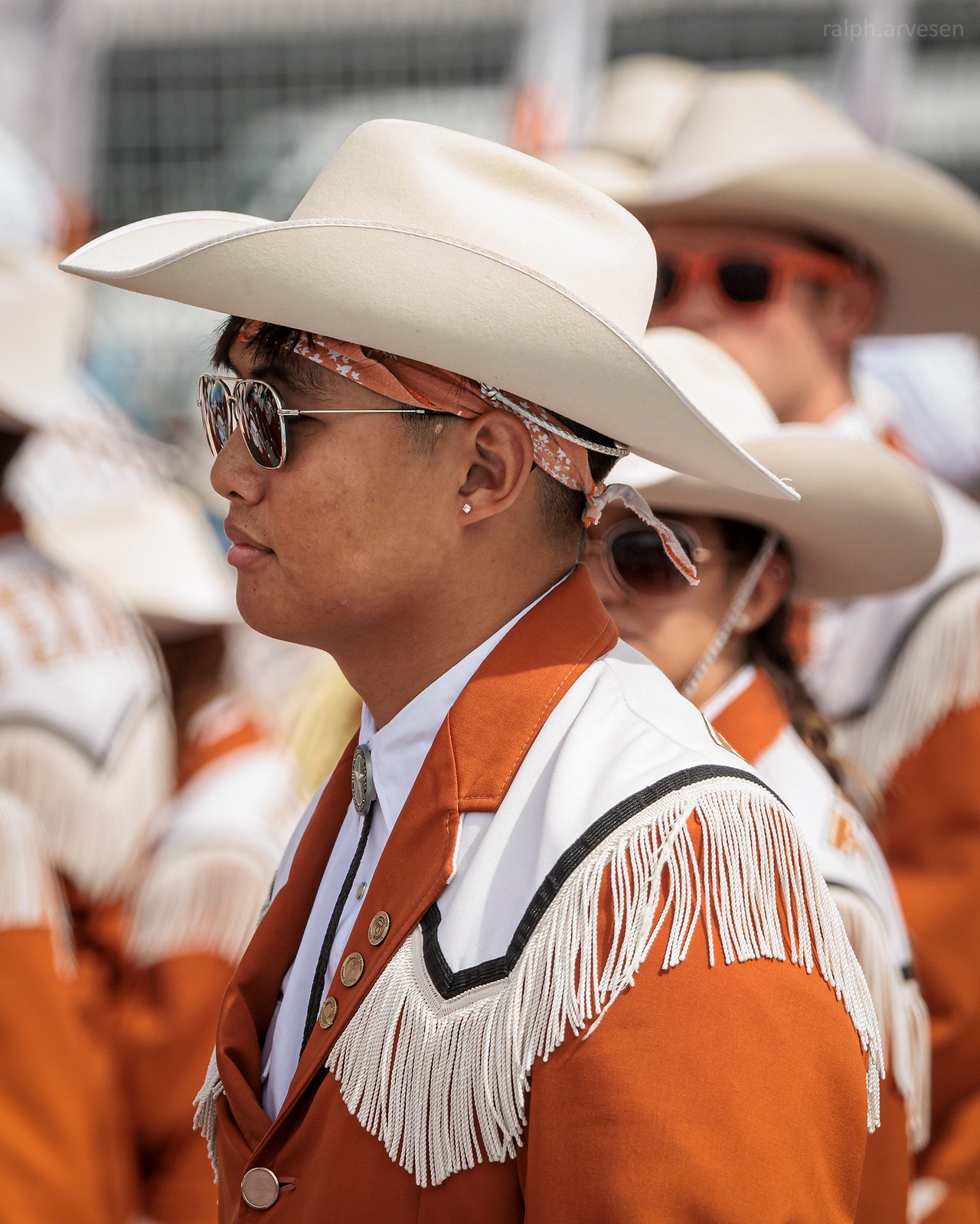
The University of Texas Longhorn Band at the Formula 1 Aramco United States Grand Prix 2022 race at the Circuit of The Americas in Austin, Texas on October 23, 2022. (Photo: Ralph Arvesen)
University of Texas Longhorn Band
The University of Texas Longhorn Band, also known as the Showband of the Southwest, was founded in 1900 as the marching band of The University of Texas at Austin, and is the largest student spirit organization on the UT campus. The Longhorn Band is a year-round program offered as a course by the Butler School of Music at The University of Texas. Registration in this course is open to any student of the various academic disciplines provided at The University of Texas. Activities begin in August with Band Week and continue until University graduations in late May.
Throughout the fall, the Longhorn Band performs at all University of Texas football games with a smaller segment of the band that travels with the team for out-of-state games. Additional performances include bowl games, pep rallies, parades, and a special halftime show with the Longhorn Alumni Band. The Longhorn Band makes guest appearances at many campus and community events that spotlight the popularity of the band. Other notable annual activities include concerts at local performance venues, on campus appearances, and the Fiesta Flambeau Parade in San Antonio.
F1
Formula One (also known as Formula 1 or F1) is the highest class of international racing for open-wheel single-seater formula racing cars sanctioned by the Fédération Internationale de l'Automobile (FIA). The World Drivers' Championship, which became the FIA Formula One World Championship in 1981, has been one of the premier forms of racing around the world since its inaugural season in 1950. The word formula in the name refers to the set of rules to which all participants' cars must conform. A Formula One season consists of a series of races, known as Grands Prix, which take place worldwide on both purpose-built circuits and closed public roads.
A points system is used at Grands Prix to determine two annual World Championships: one for drivers, the other for constructors. Each driver must hold a valid Super License, the highest class of racing license issued by the FIA. The races must run on tracks graded "1" (formerly "A"), the highest grade-rating issued by the FIA.
Formula One cars are the fastest regulated road-course racing cars in the world, owing to very high cornering speeds achieved through the generation of large amounts of aerodynamic downforce. Much of this downforce is generated by front and rear wings, which have the side effect of causing severe turbulence behind each car. The turbulence reduces the downforce generated by a car following directly behind, making it hard to overtake. Major changes to the cars for the 2022 season has seen greater use of ground effect aerodynamics, and modified wings to reduce the turbulence behind the cars, with the goal of making overtaking easier. The cars are dependent on electronics and aerodynamics, suspension and tires. Traction control, launch control, and automatic shifting, plus other electronic driving aids, were first banned in 1994. They were briefly reintroduced in 2001, and have more recently been banned since 2004 and 2008, respectively.
Circuit of the Americas History
This is the first circuit in the US to be purpose-built for Formula One. Both the race and the circuit were proposed in 2010 by promoter Tavo Hellmund and World Champion motorcyclist Kevin Schwantz. Assistance was provided by the Hermann Tilke group, and construction started later that year.
The circuit relies on the State of Texas to fund the $25 million fee charged by Formula One to hold the race every year. For FY2016, a conservative faction in the Texas state legislature proposed a 50% reduction in the contribution of the state to that fee, which would in effect have forced the race to be cancelled, or at least dropped to every-other-year status. That proposal was eventually voted down, but the specter of future attempts by the extremists is omnipresent.
In February 2022, the contract to host the United States Grand Prix at COTA was extended for an additional 5 years through the 2026 season.
Circuit of the Americas Layout
The circuit is built on hilly range land, about 10 miles southeast of Austin. It runs counter-clockwise, placing unusual stress loads on the drivers. The course has four basic sections: the 0.6 km start/finish strait, with a sharp uphill section ending in a 135° lefthander; an eight turn sequence inspired by the Maggotts-Becketts-Chapel section of Silverstone; another sharp hairpin leading onto a 1.1 km back straight; and a final series of tight corners that includes a near replica of turn 8 at Istanbul Park (but taken in the opposite direction).
Inside the turn 8 replica (known here as turns 17 and 18) is an amphitheater, designed for crowds up to 15,000, but somehow they squeezed in 80,000 fans for a Taylor Swift concert, the night before the 2016 United States Grand Prix. Immediately behind the amphitheater stage is a 77 meter (253 ft) tall observation tower and centerpiece, giving views of the track and all of the Austin metro area.
In between turns six and seven, a pair of short connecting roads create smaller courses for testing and lower formulae. With these roads, it is possible for two separate groups to hold events or conduct testing simultaneously.
The track configuration has never changed since the track opened. However, a concert stage for larger acts has now been set up along the back straight, facing the infield and the grandstands above Turn 10. This configuration is capable of accommodating 100,000 fans.
University of Texas Longhorn Band
web | facebook | twitter | instagram
F1
web | facebook | twitter | instagram
Circuit of The Americas
web | facebook | twitter | instagram
Photos by Ralph Arvesen
web | facebook | twitter | instagram


